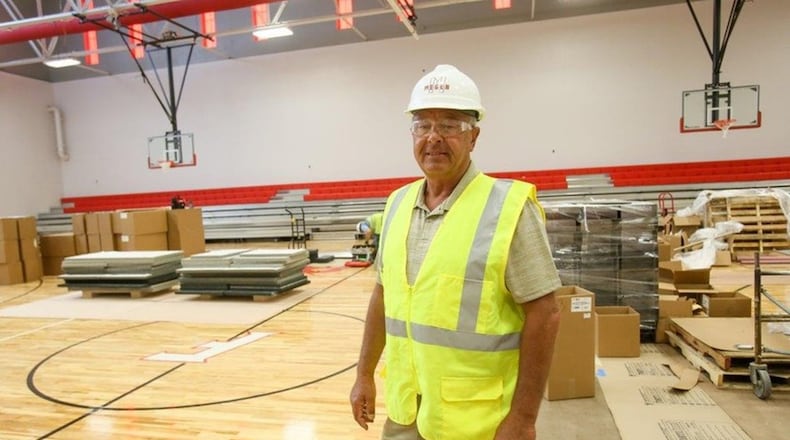Buried under the campuses of each of the schools — Fairfield Freshman, Compass and Central elementaries — are geothermal systems with miles of pipes inside small wells dug down 450 feet.
The constant temperatures underground — in Ohio an average of about 46 degrees — are used to maintain the water temperatures in the pipes to reduce the energy needed to either cool or heat the water and therefore the school buildings.
“We chose the geothermal system because it is the most economical way to heat and cool a building,” explained Tom Weiser, director of business operations for Fairfield Schools.
“The payback on the additional cost of installing this type of system was estimated at a payback of five years on the elementaries and seven years on the Freshman building,” said Weiser.
The 10,000-student Fairfield Schools opened the three new schools Sept. 5.
The Freshman School shares the high school campus and has 145,000 square feet and 50 classrooms. The new elementary schools are identical with 90,366 square feet and 34 classrooms.
Weiser said, “at both elementaries there are 60 wells that were drilled straight down 450 feet each. At the freshman school there are 110 wells at 450 feet deep. When you consider that a line goes down 450 feet and loops back up 450 feet and take this by the number of wells, there are 10 miles of piping in the geo field at the elementaries and 18 miles of pipe at the freshman building.”
“The water from the geo fields is circulated through the building to heat pumps that uses the constant temperature water to make heat or cooling for the building,” he said. “The payback on the additional cost of installing this type of system was estimated at a payback of five years on the elementaries and seven years on the freshman building.”
Edgewood Schools in rural Butler County also installed a similar geothermal system under the campus of its high school, which was opened in 2012.
John Thomas, Edgewood’s director of business operations, said the system works.
“It’s been a great system for us and we are seeing savings,” said Thomas.
Saving taxpayer money was the prime motivation for Fairfield school officials’ decision to try the district’s first geothermal system, said Fairfield spokeswoman Gina Gentry-Fletcher.
“It makes sense that we use a geothermal heating and cooling system in our new schools, not only for environmental reasons, but also for its energy and cost efficiency. We will reap many benefits at the start and also long term for students and staff,” said Gentry-Fletcher.
Weiser said another advantage of the system is that longevity.
“These systems are very reliable with few moving parts. The geo fields should serve the buildings for the term of their existence and are guaranteed for 50 years.”
About the Author
